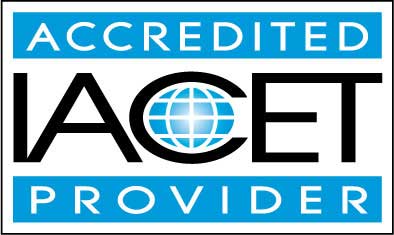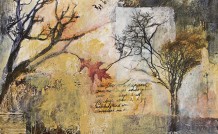Online Class: How To Draw 101

no certificate
with CEU Certificate*
-
15Lessons
-
32Exams &
Assignments -
13,263Students
have taken this course -
13Hours
average time -
1.3CEUs
Course Description
This course is designed for beginner artists who have an interest in learning how to draw or sketch -- or simply want to improve their skills. It covers the tools you'll need to draw and also provide plenty of exercises to practice drawing using different techniques and styles. It will cover drawing people, places, things, and even abstract concepts. For best results, we highly recommended that you take your time going through this course.
It's easy to get excited and flip through the pages, just to see what we'll teach you to draw next. However, you'll miss out on the overall purpose of this course if you do. Learning to draw is a process, even if it is a fun one. In this course, you're going to learn the processes and techniques that gave rise to some of the most talented artists in the world. What you're going to learn over the fifteen lessons will be in-depth, professional information. It can be comparable to signing up for an art class at a large university.
That said, don't expect to be a master artist after you finish this course. Instead, expect to have the knowledge and training you need to continue to draw and learn to bring the scenes you see in your daily life to paper. You'll be able to draw whatever you see, and you'll have the knowledge to perfect the image. So, sit back and relax. You're not going to be judged or graded on your skill. The only grade you'll receive will be based upon your comprehension of the techniques and information we present. Your skill is something that will improve over time, and you'll be able to refer to this course whenever you want in the future.
Course Motivation
This course is designed for beginner artists who have an interest in learning how to draw or sketch -- or simply want to improve their skills. It will cover the tools you'll need and also give you plenty of chances to practice drawing different things, from people, places, things, and then beyond. It's highly recommended that you take your time going through this course.
It's easy to get excited and flip through the pages, just to see what we'll teach you to draw next. However, you'll miss out on the overall purpose of this course if you do. Learning to draw is a process, even if it is a fun one. In this course, you're going to learn the processes and techniques that gave rise to some of the most talented artists in the world. What you're going to learn over the upcoming lessons will be in-depth, professional information. It can be comparable to signing up for an art class at a large university.
However, it's also important that you keep in mind that this course IS for beginners. This means that, even though you're going to learn a lot, you shouldn't expect to be the resident artist at a gallery any time soon (but please let us know if that does happen). The word "draw" is a verb. Remember that. It means "to draw." It also means that you must draw often and practice the skills you learn here if you want to improve.
This course doesn't require that you go out and purchase a ton of art supplies if you don't want to. A pencil and a piece of paper is all that is needed. In addition, you can complete this course by drawing, reading the lesson and answering the exercise questions at the end of each lesson because this proves to us that you've mastered the information presented in the lesson.
Learning HOW to draw is taught in this course. But it's up to you to actually learn to draw. It's advised, if you're serious about learning to draw, that you take the time to purchase the basic supplies listed in Lesson 2, then complete the drawing assignments throughout this course. The assignments are for practice because you can't get better at drawing if you don't keep practicing. How you put this course to work for you is your choice. We're here to teach you the basic skills that you'd learn in most college art classes. It's up to you to take the skills you learn and put them to use in actual drawings.
You CAN Draw -- and We'll Prove it to You
Almost everyone LIKES to sketch. Whether it's scribbles they put on paper or actual drawings that will be hung on a wall, there's not many that don't enjoy "doodling" on paper to create shapes, objects, and even pictures. But most people honestly believe that, aside from scribbling, they really can't draw. How many times have you said (or heard someone else say), "I can't draw a straight line!" Or "I love to doodle, but I couldn't draw a decent picture to save my life."
Well, here's the thing about all that. You don't have to be a renowned artist to be able to draw. If you can sit down and draw a square, a triangle, a circle... then you can learn to draw almost anything you see. No, your work may never hang in a gallery or museum, but you can be taught to draw things you see -- either in the world or in your mind -- and those things can be recognizable and even pleasing to anyone who sees them. All it takes is the willingness to learn.
That said, as we start to embark on this course, remember these three important things. They will be critical to how much you actually learn.
- You don't need to be able to draw well before starting this course. If you can't draw a straight line, that's fine.
- You don't have to have a "natural ability" to be good at drawing. Drawing is a natural ability that we all have. You had to learn to walk when you were a baby, didn't you? Now you're going to learn how to draw.
- Keep in mind that you're here to learn. Don't expect perfection the first time! If your first portrait looks like a space alien or if your first animal looks like a blob, that's okay. This is supposed to be fun, and it's supposed to be practice. If you get frustrated with yourself right out of the gate, you'll stop yourself from learning because your mind won't be open to it. Instead, have fun with it. Save the "awful" drawings, then continue to practice. You'll be able to pull those awful ones out a few months from now and see marked improvement.
Drawing is fun! It can be a way to relax, but it can also be a way to express yourself. Rather than thinking of drawing as a task you have to learn and master, instead think of it as this:
- A way to illustrate your perceptions of the world around you. You can show others what you see without speaking a word.
- An activity that is both fun and exciting. It doesn't take many supplies to draw, and you can take pride in the art you create.
- A way to add your personal touch to your surroundings. Frame some of your drawings and hang them in your home. You'll be surprised how much family and friends will love your drawings.
- An activity that is relaxing, but at the same time stimulating and challenging. You CAN learn to draw, and you will improve as much as you want to by practice and with patience.
How to Practice Drawing
Throughout this course, we're going to teach you how to draw. But learning how to draw is not going to help you learn to do it. The only way you can learn to draw is to practice the techniques you learn here and keep improving.
You're going to get all the tools in this course that you need to start drawing. After you finish, however, it will be up to you to use those tools and practice those techniques as you explore the basics of drawing. Just remember that you can finish this course at your own pace, and you should also draw at your own pace. Don't ever let yourself feel rushed. Creativity is never rushed, first of all. And improving at drawing takes patience as much as it does practice.
Here are some tips for practicing:
- Draw everything you see at every chance you get. Even if it's just a simple sketch on scrap paper, it will help your mind's eye start to really see your surroundings. It will also help you improve your skills.
- If there's something you're not so great at (such as drawing circles), practice and practice some more. The more you sketch circles, the better you're going to get.
- Pinpoint the most difficult part of each drawing you create, then recreate that section over and over. This will help you to perfect techniques that are giving you trouble.
- Practice making lines, marks, and shading by just doodling and scribbling on scrap paper.
There are all sorts of media that artists use to draw. Some prefer to use charcoal, some paints, and the list goes on. What's more, some like to simply draw landscapes. I'm sure you've watched the guy who is on public television and all the landscapes he paints. Landscapes are his niche, as is the paint that he uses to create them.
The point is, that the more you draw, you'll discover your drawing niche. You'll develop your own personal style, and that style will include the media that you use as well as the type of drawings that you do.
To find your niche:
- Draw everything you see, as time permits. We said this in the last section, but it applies here too. In order to discover what you like drawing the best, draw everything at first.
- Explore different media. Of course, you'll want to start out with a pencil because it affords the easiest way to erase and correct mistakes. But once you learn the basics of drawing, don't be afraid to branch out and try different things.
- Try different drawing tools. We'll talk about those in this course. Although tools can mean pencils, paper, rulers, etc, it can also refer to things such as grids.
- Try all the drawings presented in this course. Learn the basics of drawing, and challenge yourself to draw things presented to you. Don't limit yourself to the things you see around you. Challenge yourself with the optional drawing assignments in this course. Not only will the practice help you to improve, you might also find a type of subject that you enjoy drawing (and are very good at).
It's a good question, isn't it? Look around you. Look at the hundreds of things that surround you just in your own home. This course will show you how different subjects are drawn, and perhaps you can use that as a starting point. After seeing how to draw a certain type of subject in this course, you can then start to draw those subjects as you see them in the real world.
Here are some examples of subjects:
- People. Are you the type of person who likes to watch people? You'll learn the basics of drawing them in this course.
- Animals . Drawing animals can be a lot of fun.
- Mother Nature . Drawing trees and flowers can be fun, but it can also make beautiful wall art.
- Things . Look around the room you're in. Maybe you could draw the phone, a bottle of ketchup, a bowl of fruit... the possibilities are endless. In this course, you'll learn how to capture these types of subjects.
- Completely Online
- Self-Paced
- Printable Lessons
- Full HD Video

- 6 Months to Complete
- 24/7 Availability
- Start Anytime
- PC & Mac Compatible
- Android & iOS Friendly
- Accredited CEUs

Course Lessons
Lesson 1: Introduction to Drawing
 Lesson 1 Video A
Lesson 1 Video A
 Lesson 1 Video B
Lesson 1 Video B
 Lesson discussions: Drawing Skills; Reasons for Taking this Course
Lesson discussions: Drawing Skills; Reasons for Taking this Course Complete Assignment: An Introduction
Complete Assignment: An Introduction Complete: Lesson 1 Assignment
Complete: Lesson 1 Assignment Assessment: Lesson 1: Introduction to Drawing
Assessment: Lesson 1: Introduction to Drawing
Lesson 2: The Tools You'll Need -- and How to Use Them
 Lesson 2 Video A
Lesson 2 Video A
 Lesson 2 Video B
Lesson 2 Video B
 Lesson discussions: Drawing Tools
Lesson discussions: Drawing Tools Complete: Lesson 2 Assignment
Complete: Lesson 2 Assignment Assessment: Lesson 2: The Tools You'll Need -- and How to Use Them
Assessment: Lesson 2: The Tools You'll Need -- and How to Use Them
Lesson 3: Looking at Things You Can Draw
 Lesson 3 Video A
Lesson 3 Video A
 Lesson 3 Video B
Lesson 3 Video B
 Complete: Lesson 3 Assignment
Complete: Lesson 3 Assignment Assessment: Lesson 3: Looking at Things You Can Draw
Assessment: Lesson 3: Looking at Things You Can Draw
Lesson 4: Seeing the World as an Artist
 Lesson 4 Video A
Lesson 4 Video A
 Lesson 4 Video B
Lesson 4 Video B
 Complete: Lesson 4 Assignment
Complete: Lesson 4 Assignment Assessment: Lesson 4: Seeing the World as an Artist
Assessment: Lesson 4: Seeing the World as an Artist
Lesson 5: Drawing Lines
 Lesson 5 Video A
Lesson 5 Video A
 Lesson 5 Video B
Lesson 5 Video B
 Complete: Lesson 5 Assignment
Complete: Lesson 5 Assignment Assessment: Lesson 5: Drawing Lines
Assessment: Lesson 5: Drawing Lines
Lesson 6: Lights and Shadows
 Lesson 6 Video A
Lesson 6 Video A
 Lesson 6 Video B
Lesson 6 Video B
 Complete: Lesson 6 Assignment
Complete: Lesson 6 Assignment Assessment: Lesson 6: Lights and Shadows
Assessment: Lesson 6: Lights and Shadows
Lesson 7: Shading
 Lesson 7 Video A
Lesson 7 Video A
 Lesson 7 Video B
Lesson 7 Video B
 Complete: Lesson 7 Assignment
Complete: Lesson 7 Assignment Assessment: Lesson 7: Shading
Assessment: Lesson 7: Shading
Lesson 8: Texture
 Lesson 8 Video A
Lesson 8 Video A
 Lesson 8 Video B
Lesson 8 Video B
 Complete: Lesson 8 Assignment
Complete: Lesson 8 Assignment Assessment: Lesson 8: Texture
Assessment: Lesson 8: Texture
Lesson 9: Perspectives
 Lesson 9 Video A
Lesson 9 Video A
 Lesson 9 Video B
Lesson 9 Video B
 Complete: Lesson 9 Assignment
Complete: Lesson 9 Assignment Assessment: Lesson 9: Perspectives
Assessment: Lesson 9: Perspectives
Lesson 10: Composition and Planning Drawings
 Lesson 10 Video A
Lesson 10 Video A
 Lesson 10 Video B
Lesson 10 Video B
 Complete: Lesson 10 Assignment
Complete: Lesson 10 Assignment Assessment: Lesson 10: Composition and Planning Drawings
Assessment: Lesson 10: Composition and Planning Drawings
Lesson 11: Drawing Memories
 Lesson 11 Video A
Lesson 11 Video A
 Lesson 11 Video B
Lesson 11 Video B
 Complete: Lesson 11 Assignment
Complete: Lesson 11 Assignment Assessment: Lesson 11: Drawing Memories
Assessment: Lesson 11: Drawing Memories
Lesson 12: Drawing a Still Life
 Lesson 12 Video A
Lesson 12 Video A
 Lesson 12 Video B
Lesson 12 Video B
 Lesson discussions: Still Life
Lesson discussions: Still Life Complete: Lesson 12 Assignment
Complete: Lesson 12 Assignment Assessment: Lesson 12 Exercise
Assessment: Lesson 12 Exercise
Lesson 13: Trees and Flowers
 Lesson 13 Video A
Lesson 13 Video A
 Lesson 13 Video B
Lesson 13 Video B
 Complete: Lesson 13 Assignment
Complete: Lesson 13 Assignment Assessment: Lesson 13 Exercise
Assessment: Lesson 13 Exercise
Lesson 14: Drawing Animals
 Lesson 14 Video A
Lesson 14 Video A
 Lesson 14 Video B
Lesson 14 Video B
 Complete: Lesson 14 Assignment
Complete: Lesson 14 Assignment Assessment: Lesson 14 Exercise
Assessment: Lesson 14 Exercise
Lesson 15: Drawing People
 Lesson 15 Video A
Lesson 15 Video A
 Lesson 15 Video B
Lesson 15 Video B
 Lesson discussions: Drawing; Program Evaluation Follow-up Survey (End of Course); Course Comments
Lesson discussions: Drawing; Program Evaluation Follow-up Survey (End of Course); Course Comments Complete: Lesson 15 Assignment
Complete: Lesson 15 Assignment Assessment: Lesson 15 Exercise
Assessment: Lesson 15 Exercise Assessment: The Final Exam
Assessment: The Final Exam
Learning Outcomes
- Identify the tools you'll need -- and how to use them.
- Identify things you can draw.
- Demonstrate drawing lines.
- Demonstrate drawing lights and shadows.
- Demonstrate shading techniques.
- Demonstrate texture use in drawing.
- Demonstrate drawing perspectives.
- Summarize composition and planning drawings.
- Demonstrate drawing memories.
- Demonstrate drawing a still life.
- Demonstrate drawing trees, flowers, and animals.
- Demonstrate drawing people.
- Demonstrate mastery of lesson content at levels of 70% or higher.
Additional Course Information

- Document Your Lifelong Learning Achievements
- Earn an Official Certificate Documenting Course Hours and CEUs
- Verify Your Certificate with a Unique Serial Number Online
- View and Share Your Certificate Online or Download/Print as PDF
- Display Your Certificate on Your Resume and Promote Your Achievements Using Social Media

Choose Your Subscription Plan
No Certificate / No CEUs
This course only
| Includes certificate | X |
| Includes CEUs | X |
| Self-paced |

|
| Instructor support |

|
| Time to complete | 6 months |
| No. of courses | 1 course |
Certificate & CEUs
This course only
| Includes certificate |

|
| Includes CEUs |

|
| Self-paced |

|
| Instructor support |

|
| Time to complete | 6 months |
| No. of courses | 1 course |
Certificates & CEUs
Includes all 600+ courses
| Includes certificate |

|
| Includes CEUs |

|
| Self-paced |

|
| Instructor support |

|
| Time to complete | 12 Months |
| No. of courses | 600+ |
Certificates & CEUs
Includes all 600+ courses
| Includes certificate |

|
| Includes CEUs |

|
| Self-paced |

|
| Instructor support |

|
| Time to complete | 24 Months |
| No. of courses | 600+ |
Student Testimonials
- "This course was great and helped me define my drawing skills. Also I learned so many things that I ignored such as the hatching and crosshatching, values, shadows, light, etc." -- Cecilia P.
- "I enjoy this course very much ,it was very easy to understand and I felt that I was really face to face with the teacher. The videos were very useful to me as well as each lesson!" -- Alma rosa A.
- "I have learned so much from this class, I can't think of anything that was missed." -- Joanna W.
- "Both of the instructors were very helpful, clear and knowledgeable." -- Clare C.
- "I'd like to extend my thanks to the instructor of Drawing 101, Nancy." -- Rukeiya I.
- "Nancy was great. I liked her professional approach and the fact she graded the assignments quickly." -- Saima M.
- "Great course instructor. Course is well organized. Assignments were clear." -- Lynne S.
- "Nancy Fillip is a very skilled instructor. She encourages participants to jump in and try." -- Michele C.
- "Great course, fun, thank you." -- Maria P.
- "Great organization of information." -- Shelly H.
Related Courses
-
 7 hours
0.7 CEUs
How to Start a Craft Business
+ More Info
7 hours
0.7 CEUs
How to Start a Craft Business
+ More Info
-
 8 hours
0.8 CEUs
Aromatherapy (Intermediate to Advanced)
+ More Info
8 hours
0.8 CEUs
Aromatherapy (Intermediate to Advanced)
+ More Info
-
 6 hours
0.6 CEUs
Introduction to Gardening
+ More Info
6 hours
0.6 CEUs
Introduction to Gardening
+ More Info
-
 9 hours
0.9 CEUs
Watercolor Painting 101
+ More Info
9 hours
0.9 CEUs
Watercolor Painting 101
+ More Info
-
 14 hours
1.4 CEUs
Candle Making 101
+ More Info
14 hours
1.4 CEUs
Candle Making 101
+ More Info
-
 9 hours
0.9 CEUs
Aromatherapy 101
+ More Info
9 hours
0.9 CEUs
Aromatherapy 101
+ More Info
-
 14 hours
1.4 CEUs
Feng Shui 101
+ More Info
14 hours
1.4 CEUs
Feng Shui 101
+ More Info
-
 17 hours
1.7 CEUs
Mixed Media Art
+ More Info
17 hours
1.7 CEUs
Mixed Media Art
+ More Info
-
 10 hours
1.0 CEUs
Sewing 101
+ More Info
10 hours
1.0 CEUs
Sewing 101
+ More Info
-
 15 hours
1.5 CEUs
Western Calligraphy
+ More Info
15 hours
1.5 CEUs
Western Calligraphy
+ More Info
-
 6 hours
0.6 CEUs
Etiquette Consultant
+ More Info
6 hours
0.6 CEUs
Etiquette Consultant
+ More Info
-
 7 hours
0.7 CEUs
Buying and Selling Antiques and Collectibles
+ More Info
7 hours
0.7 CEUs
Buying and Selling Antiques and Collectibles
+ More Info
-
 9 hours
0.9 CEUs
Film Appreciation
+ More Info
9 hours
0.9 CEUs
Film Appreciation
+ More Info
-
 9 hours
0.9 CEUs
Landscaping 101
+ More Info
9 hours
0.9 CEUs
Landscaping 101
+ More Info








